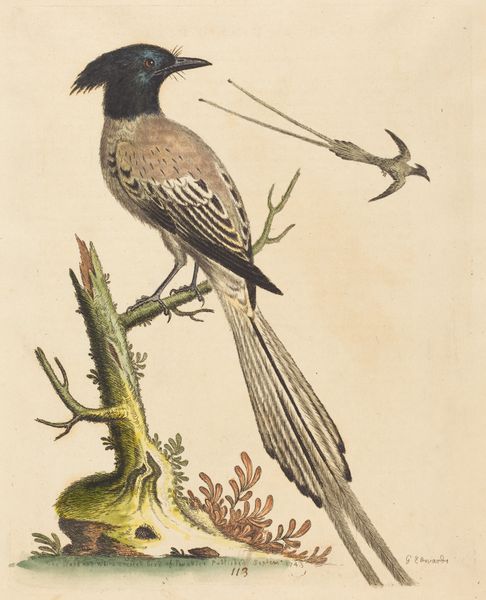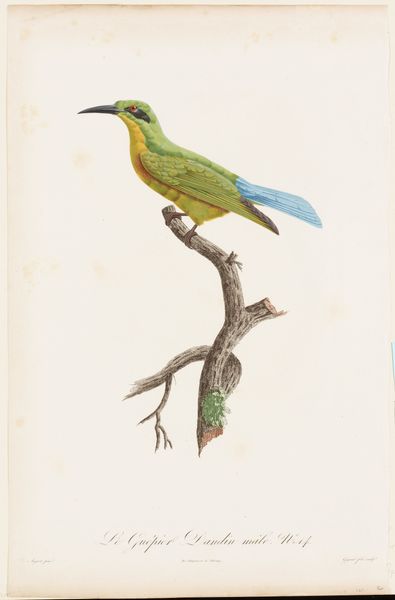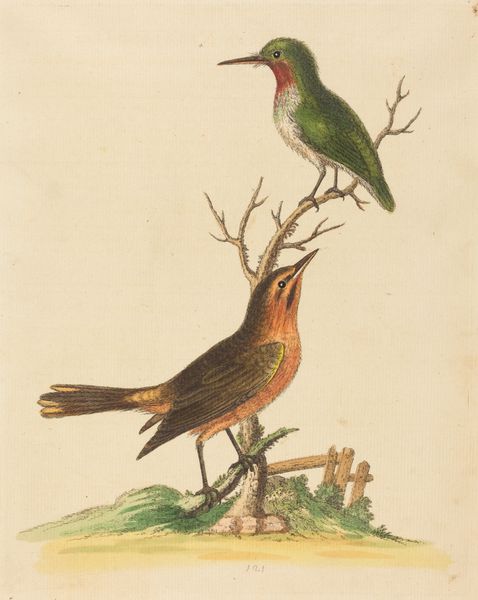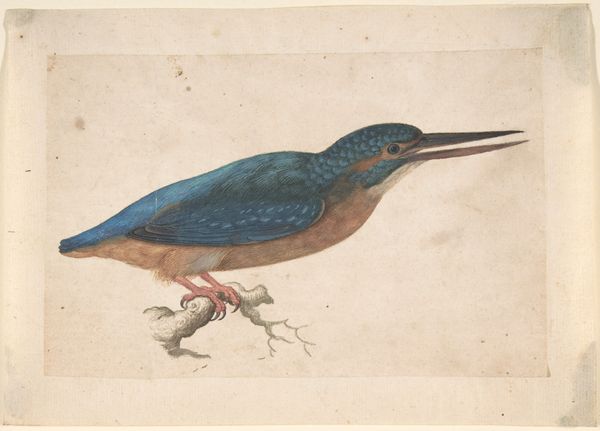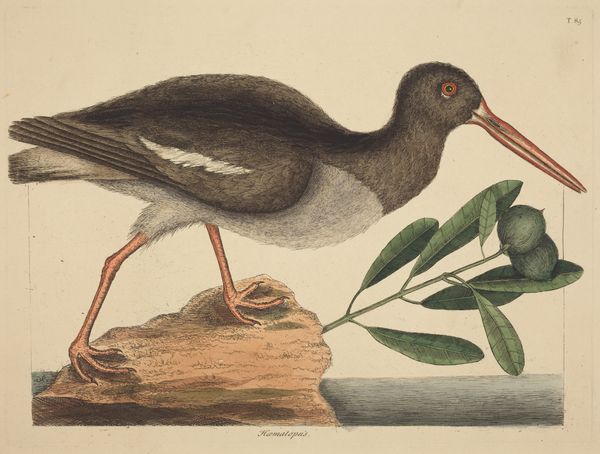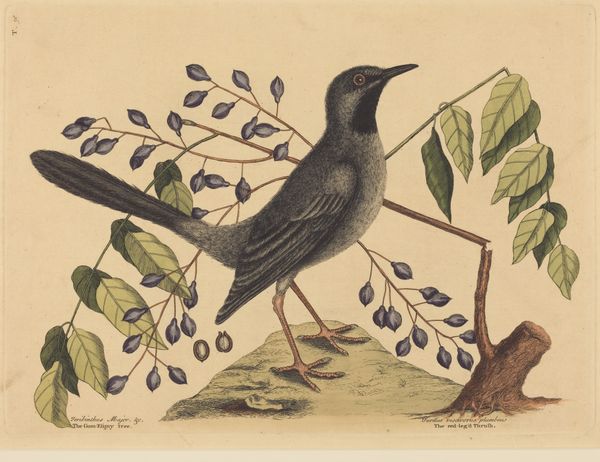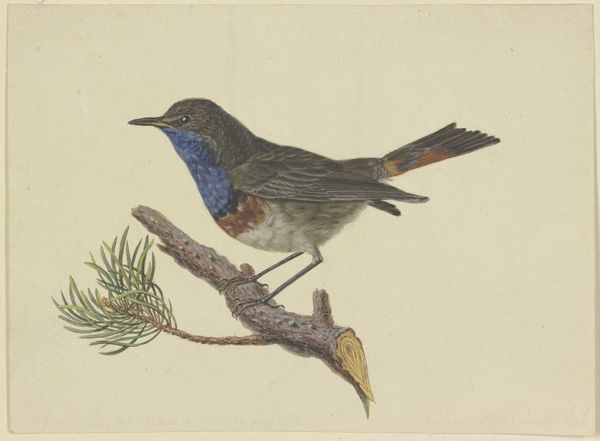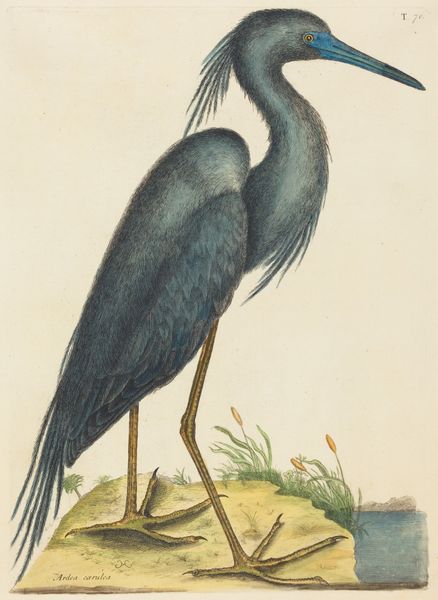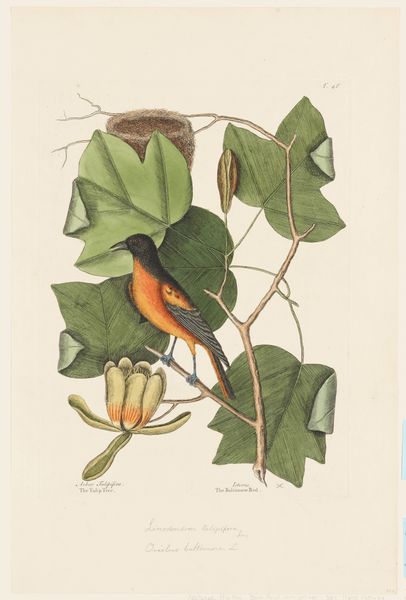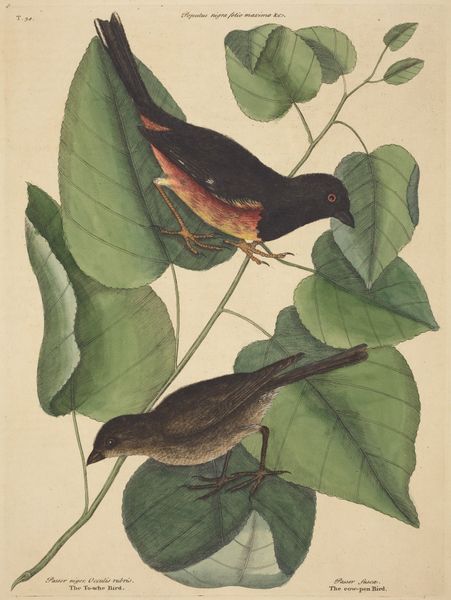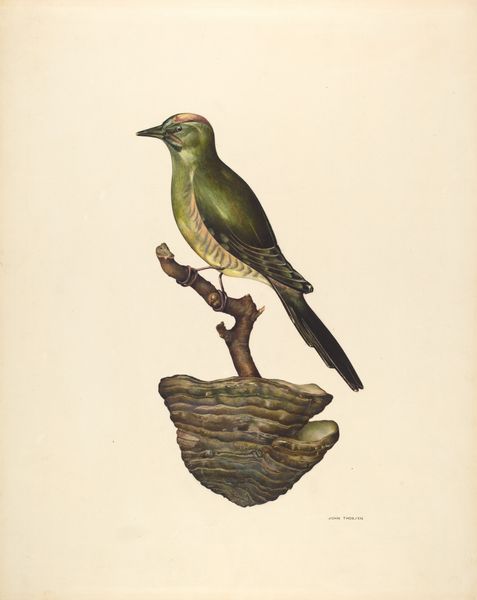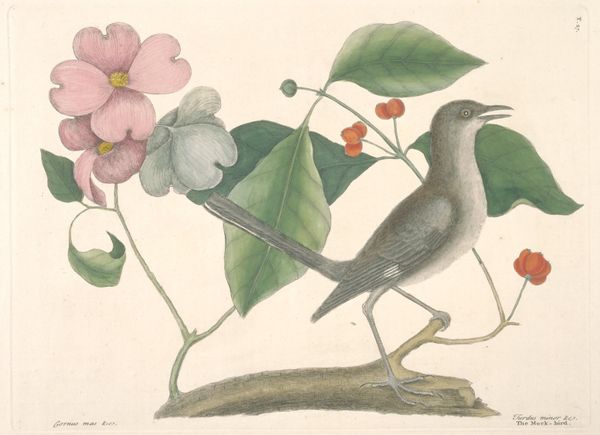
drawing, coloured-pencil, print, plein-air
#
portrait
#
drawing
#
toned paper
#
coloured-pencil
# print
#
plein-air
#
landscape
#
coloured pencil
#
animal drawing portrait
#
watercolour illustration
#
botanical art
#
realism
Dimensions: plate: 26.4 x 35.2 cm (10 3/8 x 13 7/8 in.) sheet: 29.1 x 41.1 cm (11 7/16 x 16 3/16 in.)
Copyright: National Gallery of Art: CC0 1.0
Editor: This is Mark Catesby’s "The Small Bittern," possibly from 1754. It looks like a drawing with coloured pencil and possibly some watercolour. I’m struck by how lifelike the bird appears, and by the careful observation in the details of its plumage and surroundings. What do you see in this piece from a formalist perspective? Curator: Focusing purely on the visual elements, observe how Catesby constructs space through a limited depth of field. The bird, rendered with meticulous detail, immediately commands our attention. Its textured feathers, the precise coloration—notice how they achieve depth through tonal variation—contrasts with the flatter treatment of the background elements. Editor: The background definitely feels secondary. It's almost like a stage set. Curator: Precisely. Catesby seems less concerned with atmospheric perspective and more invested in presenting the Bittern as a specimen. Examine the composition closely. The diagonal placement of the branch creates a dynamic tension, preventing the image from becoming static. Are you drawn to any particular element? Editor: I keep coming back to the bird's eye. It’s just a small detail, but the glint of light makes it feel so alive. Curator: Indeed. Catesby understands how a small detail can create a focal point, animating the entire composition. The colour choices also support this focus: the juxtaposition of the greens and browns with that sharp, almost golden eye is strategically compelling. How might a structuralist reading of the composition differ? Editor: If we're breaking down the structure, it’s a clear binary: bird and environment. The bird *is*, and the environment *supports* the bird's being. Curator: An insightful division! Now consider how we move from concrete visual facts to deeper symbolic frameworks, using structuralist thought as a mechanism. By dissecting form, one seeks universal systems of meaning. Editor: This close analysis of the artwork has helped me appreciate how every formal choice contributes to the overall impact. Thank you. Curator: My pleasure. It has revealed fresh layers within Catesby's technique and composition.
Comments
No comments
Be the first to comment and join the conversation on the ultimate creative platform.

